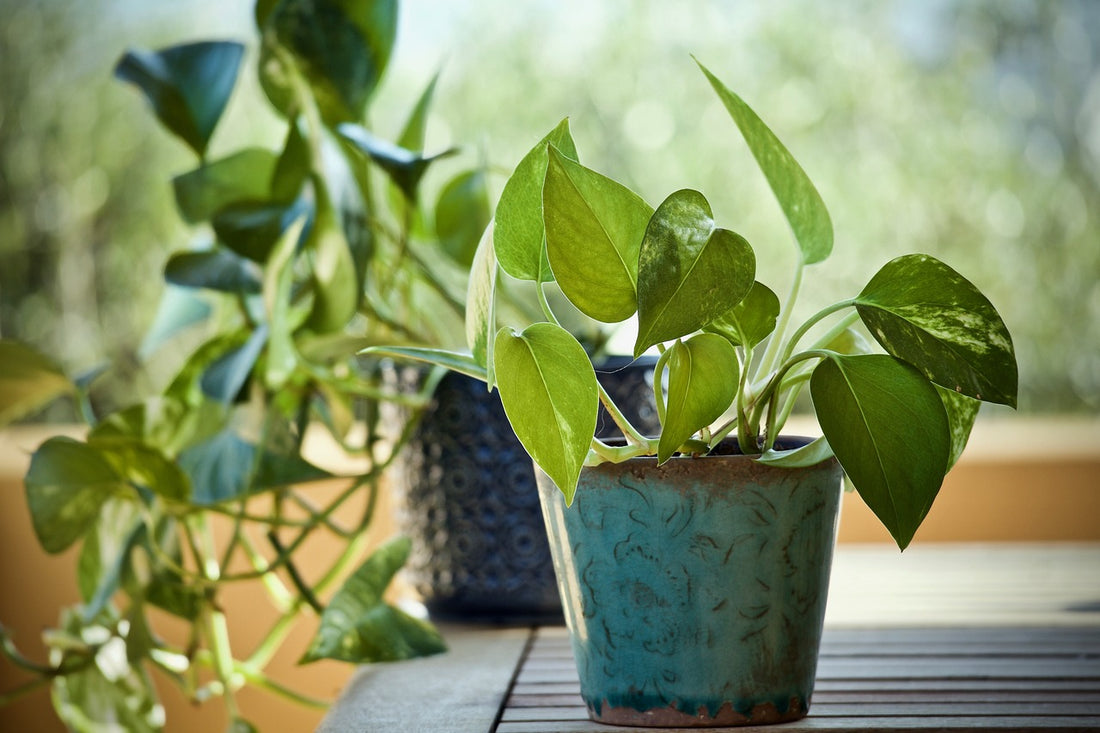Epipremnum Care Sheet: Tips for Thriving Pothos (Epipremnum aureum) Plants
Pothos, also known as Epipremnum aureum or Devil's Ivy, are beloved houseplants known for their stunning foliage and easy care. Whether you're a seasoned plant enthusiast or new to indoor gardening, this care sheet will help you keep your Pothos healthy and vibrant.
Light:
- Pothos thrive in a variety of lighting conditions. They do best in bright, indirect sunlight, but they can tolerate low light. Avoid direct sunlight, as it can scorch their leaves.
Temperature:
- Keep your Pothos in a room with temperatures between 18°C to 27°C. They can tolerate slightly cooler temperatures but should be protected from drafts and cold.
Watering:
-
Allow the top inch (2.5 cm) of the soil to dry out before watering. Water thoroughly, ensuring that excess water drains from the pot. Empty the saucer under the pot to prevent waterlogging.
-
Pothos are forgiving and can tolerate occasional underwatering better than overwatering. Overwatering can lead to root rot.
Humidity:
- While Pothos are adaptable to average indoor humidity levels, they appreciate higher humidity. Increase humidity by misting the leaves, using a humidity tray, or placing a humidifier nearby, especially in dry climates.
Fertilization:
- Feed your Pothos every 4-6 weeks during the growing season (spring through early autumn) with a balanced, water-soluble fertilizer at half the recommended strength. Reduce or eliminate fertilization during the dormant winter months when growth slows.
Pruning:
- Prune your Pothos to maintain its shape and encourage bushier growth. Trim yellowing or leggy stems at their base using clean, sharp scissors or pruning shears.
Support and Training:
- Pothos can be grown as trailing vines or climbers. Use stakes, trellises, or hooks to support their growth and shape them as desired. Pinch back the growing tips to encourage branching and fuller foliage.
Pests and Diseases:
- Pothos are generally resistant to pests and diseases. However, keep an eye out for common indoor pests like spider mites and mealybugs. If an infestation occurs, treat it promptly with insecticidal soap or neem oil.
Repotting:
- Repot your Pothos when it becomes root-bound or outgrows its current pot. Choose a slightly larger pot with well-draining soil and refresh the potting mix. Repotting is typically needed every 2-3 years.
By following these care guidelines, you can enjoy the beauty of thriving Pothos plants in your home or office. Their versatility, adaptability, and air-purifying qualities make them a popular choice among houseplants, and they can thrive with minimal effort, adding charm and vitality to your indoor spaces.

